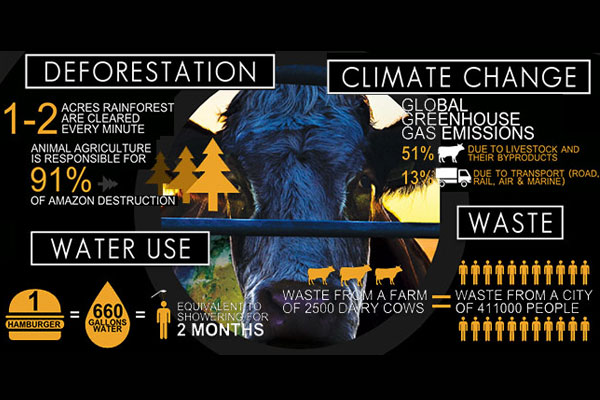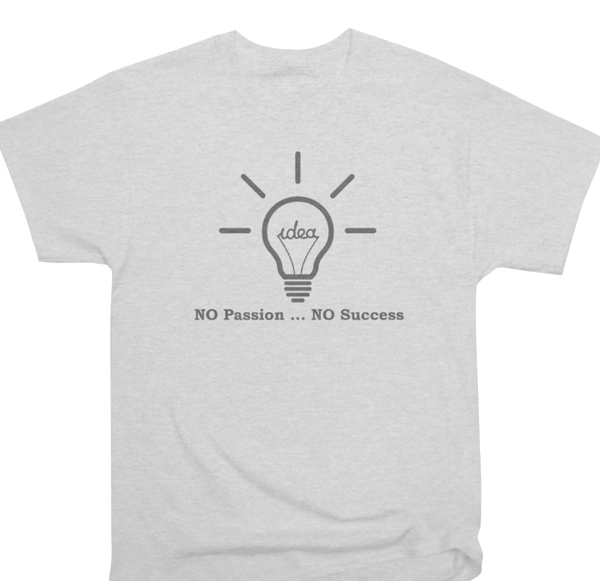Animal Agriculture

Industrial agriculture is one of the most unsustainable practices of modern civilization.
Industrial agriculture is one of the most unsustainable practices of modern civilization. From start to finish, factory farming is responsible for the abuse of land, animals, and natural resources all for the express purpose of providing cheap, unhealthy food to the large amounts of people. Industrial agriculture only really crept its way into normative American culture in the 1970s, but in just four decades, it has spread like a disease across the globe. Our current global food system is responsible for one-third of global greenhouse emissions and it completely depends on fossil fuels for transportation and synthetic fertilizers and pesticides.
Replacing small-scale farms, where a variety of crops and animals were raised in congruence with single-crop farms and “animal production facilities,” factory farming has wrought economic problems, public health concerns, inhumane conditions for billions of animals, and a huge carbon debt on the world’s agricultural system.
It is easy to fall into the traps of contradictory information that Big-Ag manufactures to justify their unsustainable practices. Below are the top five ways that factory farming harms the planet read, learn, and pass it on!
Factory farming is responsible for the abuse of land, animals, and natural resources all for the express purpose of providing cheap, unhealthy food to the masses.
1. Air Pollution
Over 37 percent of methane emissions result from factory farming. Methane has a global warming potential 20 times higher than carbon dioxide. But that doesn’t make the carbon dioxide emissions any less staggering…the fossil fuels used in energy, transportation, and synthetic pesticides/fertilizers emits 90 million tons of carbon dioxide into the atmosphere every year. On a lesser note, factory farming also releases harmful compounds like hydrogen sulfide and ammonia that can cause immediate negative health effects in humans.
2. Deforestation
In the United States alone, over 260 million acres of forest have been cleared to make room for crop fields, most of which are used to exclusively grow livestock feed. This is not a practice that only occurs in the U.S., land clearing in Brazil to grow chicken feed is responsible for the destruction of about 3 million acres of rainforest. And these numbers only account for land cleared to feed animals. Clearing land to grow soybeans in the Amazon rainforest is responsible for clearing over 100 million hectares of forest, releasing enough carbon into the atmosphere to increase the rate of global warming by 50 percent.
3. Water Pollution
Industrial agriculture sucks up 70 percent of the world’s fresh water supplies. To follow up that staggering number, the EPA estimates that 75 percent of all water-quality problems in America’s rivers and streams. Water polluted with agricultural run-off can destroy whole ecosystems and be toxic, if not lethal to humans and animals alike.
4. Monocultures
Monocultures in industrial farming poses an incredible threat to future food security across the globe. Single-crop farms are one of the “ingenious” developments that has come out of industrial agriculture. To support the livestock industry, a small group of “commodity” crops have taken up the majority of the world’s agricultural land. In the United States, corn, wheat, rice, and soybeans are planted at unprecedented rate, yet only a small percentage of these crops feed people.
Large-scale farming of monocultures depends on massive amounts of synthetic fertilizers to replace nutrients that are continually drained from soil. This practice also requires high levels of synthetic pesticides to stave off insects that are attracted to certain crops. If farmers did not receive subsidies for growing commodity crops, then crop fields could be populated with a diverse mixture of plant species that can naturally fix nitrogen into soil and control insects.
5. Fossil Fuels and Carbon Emissions
In the satirical web series “Farmed and Dangerous,” industrial farms begin feeding livestock “petro-pellets,” animal food that is really concentrated pills of fossil fuels. While this outrageous practice does not happen in real life (…yet), it does highlight how heavily factory farms rely on fossil fuels to raise animals and grow crops. Synthetic fertilizers and pesticides are derived from petroleum, the majority of crops grown with the use of these chemicals are turned into animals feed – hence the comedic irony of cutting out the crop-middle man and just feeding animals straight petro.
Between transportation, synthetic fertilizers/pesticides, and the incredible amount of energy it takes to run Concentrated Animal Feeding Operations, factory farms uses about 5.5 gallons of fossils fuels per acre. The average farm in the United States spans 418 acres, meaning it will devour about 2,300 gallons of fossil fuels. Just think about how many thousands of farms there are across the globe…

The take-away.
Animal agriculture not only destructive to the world but also not good for the human...
… Just do something. The results will Come!!!!
Call Steve, In-Training Sports | 561-281-8330
In Training Sports
www.intrainingsports.com
Personal Trainer,
servicing West Palm Beach, Palm Beach, Wellington and Jupiter Florida
3131 Village Blvd, #305
West Palm Beach, FL 33409